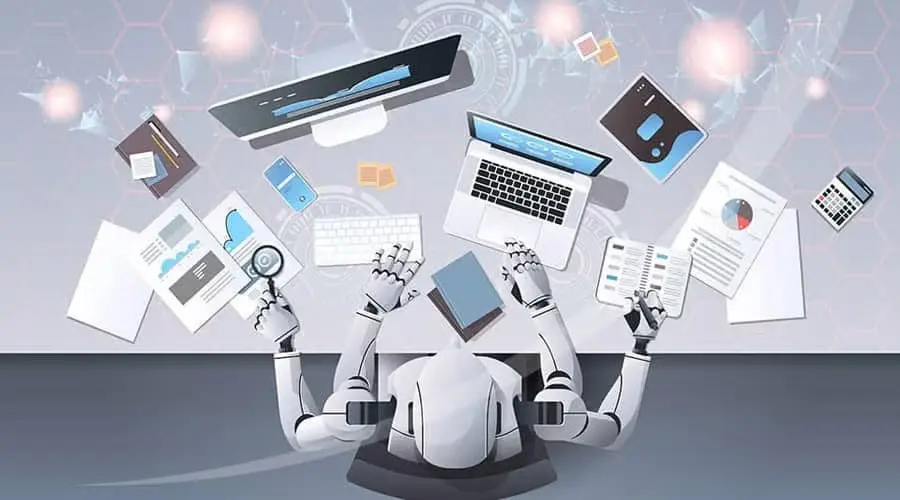Introduction: The Document Dilemma
For decades, PDFs have been the final, unchangeable document format, but the process of managing them has remained stubbornly manual. We’ve been solving one problem at a time—finding a free PDF editor for one task, a separate e-sign tool for another, a cloud service for storage.
But in 2025, this fragmented approach is obsolete. The new paradigm isn’t just about editing a PDF; it’s about automating the entire document lifecycle from creation to signature to archiving. This is AI-powered document workflow by the rise of integrated AI tools that don’t just perform tasks—they understand them.
This article is your guide to moving beyond isolated edits and building a cohesive, intelligent, and incredibly efficient document workflow. We’ll explore the AI-powered document workflow tools and strategies that can save you hours of mental energy and busywork each week.
The Limitation of the Standalone PDF Editor
First, let’s acknowledge the foundation. Free PDF editors are invaluable. They democratize the ability to manipulate what was once a fixed format. Tools like the ones extensively reviewed in this comprehensive guide to the “Best Free PDF Editors in 2025” are essential for any professional’s toolkit. They handle the crucial “edit” step brilliantly.
However, they are often a single point solution in a much larger chain. Using only a PDF AI-powered document workflow editor is like having a world-class chef who only knows how to chop onions. The chopping is excellent, but you’re missing the entire rest of the meal.
The modern workflow isn’t a single task; it’s a flow:
Create → Collaborate → Edit → Secure → Sign → Store → Manage.
Stopping at “Edit” means you’re still manually managing the subsequent steps, which is where the real time sinks lie.

The Pillars of an Intelligent Document Workflow
An automated workflow is built on four key pillars that connect traditionally siloed tasks. AI is the glue that binds them together.
1. AI-Assisted Creation & Data Extraction
Why start from a blank page? AI can now generate first drafts of reports, summaries, and content based on simple prompts. But more impressively, it can pull information from existing documents to populate new ones.
- The Tech: Tools like Notion AI, ChatGPT, and Microsoft Copilot can draft text. More powerfully, AI-powered document workflow PDF toolkits can scan documents and extract key data—like pulling names, dates, and figures from a stack of invoices to auto-populate a spreadsheet or a new contract.
- The Workflow Boost: You eliminate hours of manual data entry and reduce transposition errors. A contract can be generated by pulling client details automatically from a proposal.
2. Smart Editing & Automation
This is where traditional editing gets a brain. Beyond just changing text, AI can understand context and automate complex edits.
- The Tech: Imagine an editor that can:
- Auto-Redact: Find and permanently black out all instances of Social Security numbers or credit card information in a document with one click.
- Smart Formatting: Consistently apply branding, font styles, and layout across a multi-document portfolio.
- Batch Processing: Apply the same edit (like adding a watermark or footer) to 100 PDFs simultaneously.
- The Workflow Boost: Tasks that were tedious and error-prone become instant, secure, and flawless. This is the natural evolution of the standard tools covered in the “Best Free PDF Editors” list, taking their core functionality into the realm of automation.
3. Integrated E-Signatures & Collaboration
Chasing signatures via email is a special kind of hell. The document gets downloaded, renamed, signed, re-saved, and emailed back, creating version chaos. An intelligent workflow bakes signing directly into the process.
- The Tech: Platforms like Adobe Acrobat (with its built-in Sign tool), PandaDoc, and DocuSign integrate e-signature capabilities directly into the document. They provide a secure link to a living document, not a static attachment. Collaborators can comment, suggest edits, and sign without ever downloading a file, maintaining a single source of truth.
- The Workflow Boost: You slash the time-to-signature from days to hours. You have a clear audit trail of who saw what and when, and you completely eliminate version control issues.
4. Automated Storage & Retrieval
The final, often overlooked, step. Once a document is finalized, where does it go? Is it named consistently? Can you find it six months from now? AI can solve this too.
- The Tech: Cloud storage services like Google Drive and Dropbox are good, but AI-powered document workflow tools like Microsoft OneDrive (with its Copilot integration) or document management systems are better. They can:
- Auto-tag and categorize documents based on their content.
- Optical Character Recognition (OCR) makes every PDF, even scanned ones, searchable.
- AI Search allows you to find documents by their content, not just their filename. (e.g., “Find the contract where the client’s liability clause is limited to $50,000”).
- The Workflow Boost: You never lose a document again. You reclaim the hours spent searching for files and ensure compliance by having a perfectly organized digital archive.
Building Your Own Automated Workflow: A Practical Example
Let’s take a common scenario: Getting a New Client Proposal Signed.
The Old Way (The Time Sink):
- Write proposal in Google Docs.
- Download as PDF.
- Open PDF editor to add company logo and final tweaks.
- Email PDF to client.
- Client emails back with a request to change a term.
- Re-open editor, make change, save, email again.
- Client says “good to sign.”
- You upload PDF to a separate e-sign tool, configure signer fields, and send a link.
- Client signs, you get notified, you download the final copy.
- You manually upload the final copy to a “Signed Contracts” folder in Google Drive.
Time Elapsed: 3-5 days. Active Effort: ~45 minutes.

The New, AI-powered document workflow way
- Create: Use a tool like PandaDoc or Adobe Acrobat to create the proposal from a smart template. AI-powered document workflow suggests clauses based on the client type.
- Collaborate & Edit: Send a live link to the client. They comment directly on the document. You make edits in real-time within the same platform. No PDF email attachments.
- Sign: The “Request Signature” button is right there. You click it, assign signer fields, and it sends a secure link. The document never leaves the platform.
- Store & Manage: Upon the final signature, the document is automatically saved as a final, immutable PDF to a predefined folder in your cloud storage (e.g., “Signed Proposals > 2025”). It’s auto-tagged with the client’s name and date.
Time Elapsed: 1 day. Active Effort: ~15 minutes.
The difference is stark. You’ve replaced multiple applications and countless manual steps with a single, fluid process.
Top Tools to Power Your Workflow in 2025
You don’t need a single monolithic tool, but rather a stack that works together. Many offer generous free tiers.
- The All-in-One Contender: Adobe Acrobat (Free & Paid)
Adobe has aggressively integrated AI (called “Adobe Sensei”) across its products. The free reader now allows for more than just viewing, including commenting and limited signing. A paid subscription unlocks the full workflow: advanced editing, redaction, batch processing, integrated e-sign, and cloud storage. It’s the most complete suite for someone who wants everything in one place. - The Collaboration & Signing Specialist: PandaDoc (Freemium)
PandaDoc excels at the create-to-sign pipeline. Its free plan is excellent for creating documents, collaborating, and getting e-signatures. It’s less focused on hardcore PDF editing but integrates with tools that do. - The Cloud-Native Powerhouse: Google Workspace (Paid, with Free Tools)
For those living in Google Drive, the integration between Google Docs, PDF editing in Drive, and tools like DocuSign or Adobe Sign (which integrate with Google Workspace) can form a powerful, connected ecosystem. AI-powered document workflow features like “Help me write” in Docs kickstart the creation process. - The Automation Maestro: Microsoft 365 (Paid)
With Microsoft Copilot deeply integrated into Word, Outlook, and OneDrive, Microsoft’s ecosystem is a beast for automation. You can create documents from prompts, analyze data in Excel, and use OneDrive’s powerful AI search to find anything. Its editor in Word also seamlessly exports to PDF.
Conclusion: Stop Editing, Start Flowing
The technology has moved beyond simple editing. In 2025, the competitive advantage doesn’t go to the person with the best free PDF editor, but to the person who can most efficiently move a document from an idea to a signed, filed, and actionable piece of data.
Your mission is no longer to find a single tool. It is to audit your own document lifecycle. Identify the bottlenecks—is it creation, collaboration, signatures, or storage? Then, seek out the tools that automate that bottleneck and connect it to the next step.
Start by mastering a powerful editor, as it remains the core of document manipulation. The rigorously tested list of the best free PDF editors in 2025 is the perfect foundation. Then, build upon that foundation with integrated AI-powered document workflow tools for signing, collaboration, and intelligent storage.
